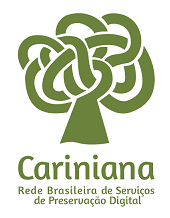Crescimento e acúmulo de nutrientes da cultura do quiabeiro
DOI:
https://doi.org/10.5433/1679-0359.2013v34n1p191Palavras-chave:
Abelmoschus esculentus (L.), Fenologia, Marcha de absorção.Resumo
Com o objetivo de quantificar o crescimento e o acúmulo de macro e micronutrientes da cultura do quiabeiro, no decorrer do ciclo, e obter equações que melhor os representem, um experimento foi realizado de 14 de janeiro a 14 de maio de 2009, na UNESP Câmpus de Jaboticabal, SP. A cv. Santa Cruz 47 foi semeada diretamente no sulco, em espaçamento de 1 x 0,2 m. No decorrer do ciclo, realizaramse coletas aleatórias de plantas com intervalos de quinze dias. As médias foram ajustadas às equações de regressão polinomial e de modelos não lineares. A partir de 50 dias após a semeadura (DAS) houve grande aumento no acúmulo de matéria seca nas partes da planta. Na colheita final, 120 DAS, as folhas, hastes e frutos representaram 21, 71 e 8%, respectivamente, da matéria seca total da planta. A seqüência decrescente de acúmulo de nutrientes pelo quiabeiro foi K, Ca, N, Mg, P, S, Fe, B, Mn, Zn e Cu, o equivalente a 6.002,8; 4.733,8; 2.930,8; 1.196,3; 473,7; 436,2; 49,82; 10,4; 7,1; 7,1 e 1,52 mg planta-1. As quantidades acumuladas pela cultura foram 146,5; 23,7; 300,1; 236,7; 59,8 e 21,8 kg ha-1 de N, P, K, Ca, Mg e S, respectivamente, e de 520,0; 76,0; 2.491,0; 355,0 e 355,0 g ha-1 de B, Cu, Fe, Mn e Zn, respectivamente.
Downloads
Downloads
Publicado
Como Citar
Edição
Seção
Licença
Semina: Ciências Agrárias adota para suas publicações a licença CC-BY-NC, sendo os direitos autorais do autor, em casos de republicação recomendamos aos autores a indicação de primeira publicação nesta revista.
Esta licença permite copiar e redistribuir o material em qualquer meio ou formato, remixar, transformar e desenvolver o material, desde que não seja para fins comerciais. E deve-se atribuir o devido crédito ao criador.
As opiniões emitidas pelos autores dos artigos são de sua exclusiva responsabilidade.
A revista se reserva o direito de efetuar, nos originais, alterações de ordem normativa, ortográfica e gramatical, com vistas a manter o padrão culto da língua e a credibilidade do veículo. Respeitará, no entanto, o estilo de escrever dos autores. Alterações, correções ou sugestões de ordem conceitual serão encaminhadas aos autores, quando necessário.
















